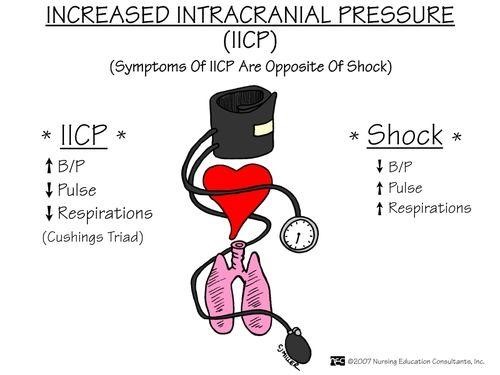A nurse is assessing an infant following a motor vehicle crash. Which of the following findings should the nurse monitor to identify increased Intracranial pressure?
Brisk pupillary reaction to light
Tachycardia
Increased sleeping
Depressed fontanelles
The Correct Answer is C

Nursing Test Bank
Naxlex Comprehensive Predictor Exams
Related Questions
Correct Answer is C
Explanation
A) A story book about a child who has diabetes:
While a story book about a child with diabetes can be informative and reassuring, it might not directly address the child's distress after an insulin injection. The child needs an interactive play activity that mimics the experience to help them cope with the distress.
B) A period of play in the playroom:
Playing in a general playroom might be enjoyable, but it may not directly address the child's specific distress related to the insulin injection. To address the distress, a play activity directly related to the injection experience is more appropriate.
C) A needleless syringe and a doll.
Explanation:
Using a needleless syringe and a doll allows the child to engage in therapeutic play that simulates the experience of receiving an insulin injection. This type of play, known as medical play or therapeutic medical play, allows children to gain a sense of control and understanding over medical procedures in a non-threatening and imaginative way. By allowing the child to "give" the doll an injection using the needleless syringe, the child can process their feelings and fears related to their own injections, helping to reduce anxiety and distress.
D) A video game:
Playing a video game can be engaging and distracting, but it doesn't directly help the child process their feelings or fears about the insulin injection. Therapeutic play involving a needleless syringe and a doll provides a more hands-on and interactive way for the child to work through their emotions.
Correct Answer is C
Explanation

Whether you are a student looking to ace your exams or a practicing nurse seeking to enhance your expertise , our nursing education contents will empower you with the confidence and competence to make a difference in the lives of patients and become a respected leader in the healthcare field.
Visit Naxlex, invest in your future and unlock endless possibilities with our unparalleled nursing education contents today
Report Wrong Answer on the Current Question
Do you disagree with the answer? If yes, what is your expected answer? Explain.
Kindly be descriptive with the issue you are facing.
